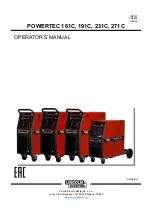
53
Bagging Surface
WARNING
Do not bag on a hillside. Tip-over or bag roll could result.
Bag up hill rather than down hill. Avoid bagging on a hillside. The bagger can drift and the bag may
roll.
Surface conditions may affect bagging quality and ability. Soft ground conditions will act as a brake
and may cause the bagger to sink. A hard clean and level surface is best to bag on. By cleaning
the area, rodent problems can be eliminated.
Bad Weather Bags
NOTE:
Remember to place bags in a location that feed out can be done when you need the feed.
Consider the surface conditions during the seasons when product will be removed from the bags. If
you expect a lot of mud, you may want to put some bags on a solid surface. Have enough acces-
sible bags to last until good weather conditions can be expected.
Bag Shape
Keep the bag away from the cables. If it appears that the cables will contact the bag, insert a piece
of cardboard between the bag and the cable.
Follow the instructions included in your bag box for bag stretch guidelines.
Haylage and Corn Silage:
Apply enough cable pressure to fill the bag within 2 inches of the top of the tunnel. Keep the bag
stretch indicators within the bag manufacturer’s specifications.
Grains:
Grains tend not to fill the bag to the top of the tunnel, regardless of cable pressure. Regulate cable
pressure by measuring your stretch bars approximately 30 feet back from the bagger. Keep the
stretch indicators within the bag manufacturer’s specifications.
















































